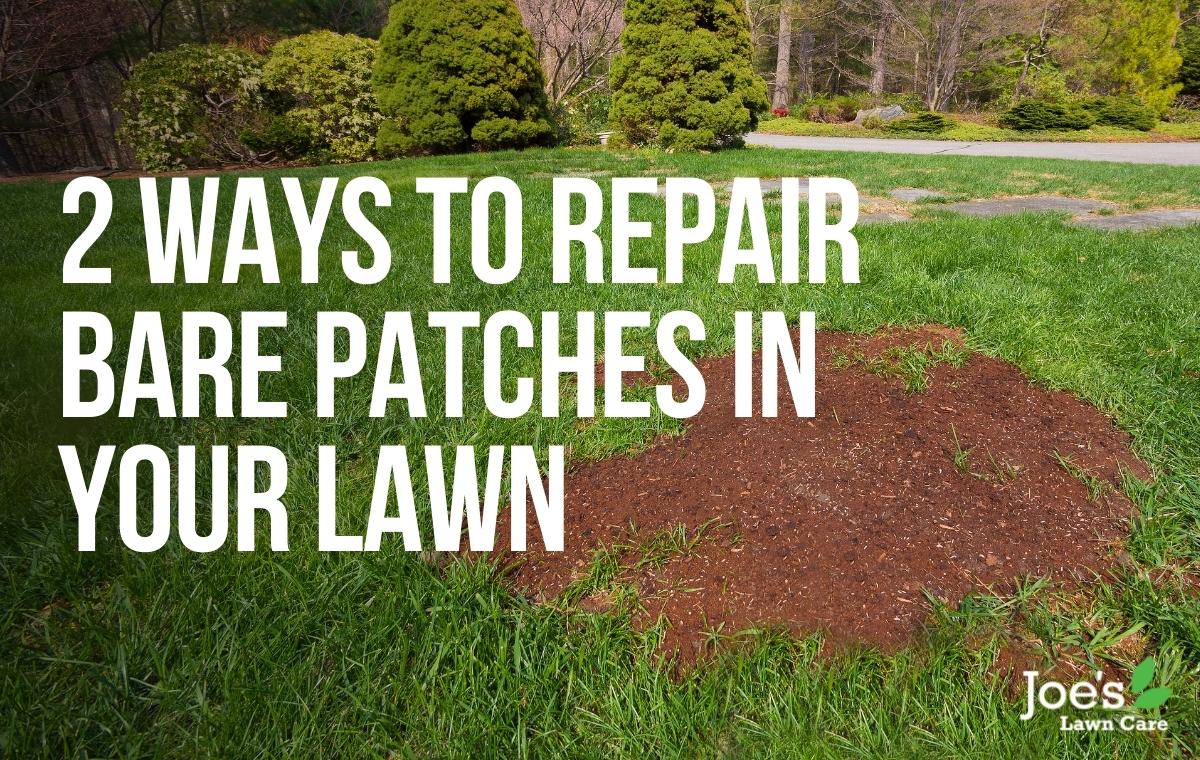Everyone loves a green and healthy lawn. But sometimes, bare patches can ruin its beauty. This guide will help you fix those bare patches. Follow these steps for a lush, green yard.

Credit: m.youtube.com
Identify the Cause of Bare Patches
First, find out why the patches are there. Common causes include:
- Heavy foot traffic
- Lack of water
- Poor soil quality
- Pests or diseases
- Pet urine
Knowing the cause helps you fix the problem better.
Gather Your Tools and Materials
Before starting, gather these items:
- Grass seed or sod
- Rake
- Shovel
- Compost or topsoil
- Watering can or hose
Having everything ready makes the job easier.
Prepare the Soil
Good soil is key to healthy grass. Follow these steps to prepare the soil:
- Remove any dead grass and weeds.
- Use a shovel to dig up the soil. Loosen it up.
- Mix in compost or topsoil. This adds nutrients to the soil.
- Level the soil with a rake. Make it even.
Now, your soil is ready for new grass.
Choose the Right Grass Seed
Select the right grass seed for your lawn. Consider these factors:
- Climate: Choose a grass type that grows well in your area.
- Sunlight: Some grasses need more sun. Others do well in shade.
- Foot Traffic: Some grasses are tougher and handle foot traffic better.
Picking the right seed helps your lawn grow strong and healthy.
Plant the Grass Seed
Now it’s time to plant the grass seed. Follow these steps:
- Spread the grass seed evenly over the bare patch.
- Lightly rake the seeds into the soil. Cover them a bit.
- Press the seeds down with your foot or a tool. Make sure they have good contact with the soil.
Your seeds are now ready to grow.

Credit: www.joeslawncare.co.uk
Water the New Grass
Watering is very important. Follow these tips for best results:
- Water the area right after planting.
- Keep the soil moist, but not too wet.
- Water lightly every day. Do this until the grass is about 2 inches tall.
Proper watering helps the new grass grow strong.
Protect the New Grass
Protect your new grass from damage. Follow these tips:
- Keep pets and children off the area.
- Put up a small fence if needed.
- Avoid mowing the new grass until it’s at least 3 inches tall.
These steps help your new grass grow without problems.
Maintain Your Lawn
Once the grass has grown, keep it healthy with these tips:
- Water your lawn regularly.
- Fertilize the lawn as needed.
- Mow the grass to the right height.
- Aerate the soil once a year. This helps air and water reach the roots.
- Watch for pests and diseases. Treat them quickly if you see any.
Regular maintenance keeps your lawn looking great.
Frequently Asked Questions
How To Identify Bare Patches In Lawn?
Look for areas without grass, usually brown or thin. Check for signs of soil exposure and uneven growth.
What Causes Bare Patches In Lawns?
Common causes include poor soil, pests, diseases, drought, and overuse. Addressing these issues helps restore your lawn.
When Is The Best Time To Repair Lawn Patches?
Early spring or early fall. Cooler temperatures and increased moisture help new grass seeds establish better.
Can I Use Any Grass Seed For Repairs?
Choose the same type of grass seed as your existing lawn. This ensures uniform growth and appearance.
Conclusion
Repairing bare patches in your lawn is easy. Follow these steps for a green and healthy yard. Identify the cause, prepare the soil, plant the right grass seed, water properly, and protect the new grass. With a little effort, your lawn will look beautiful again.
